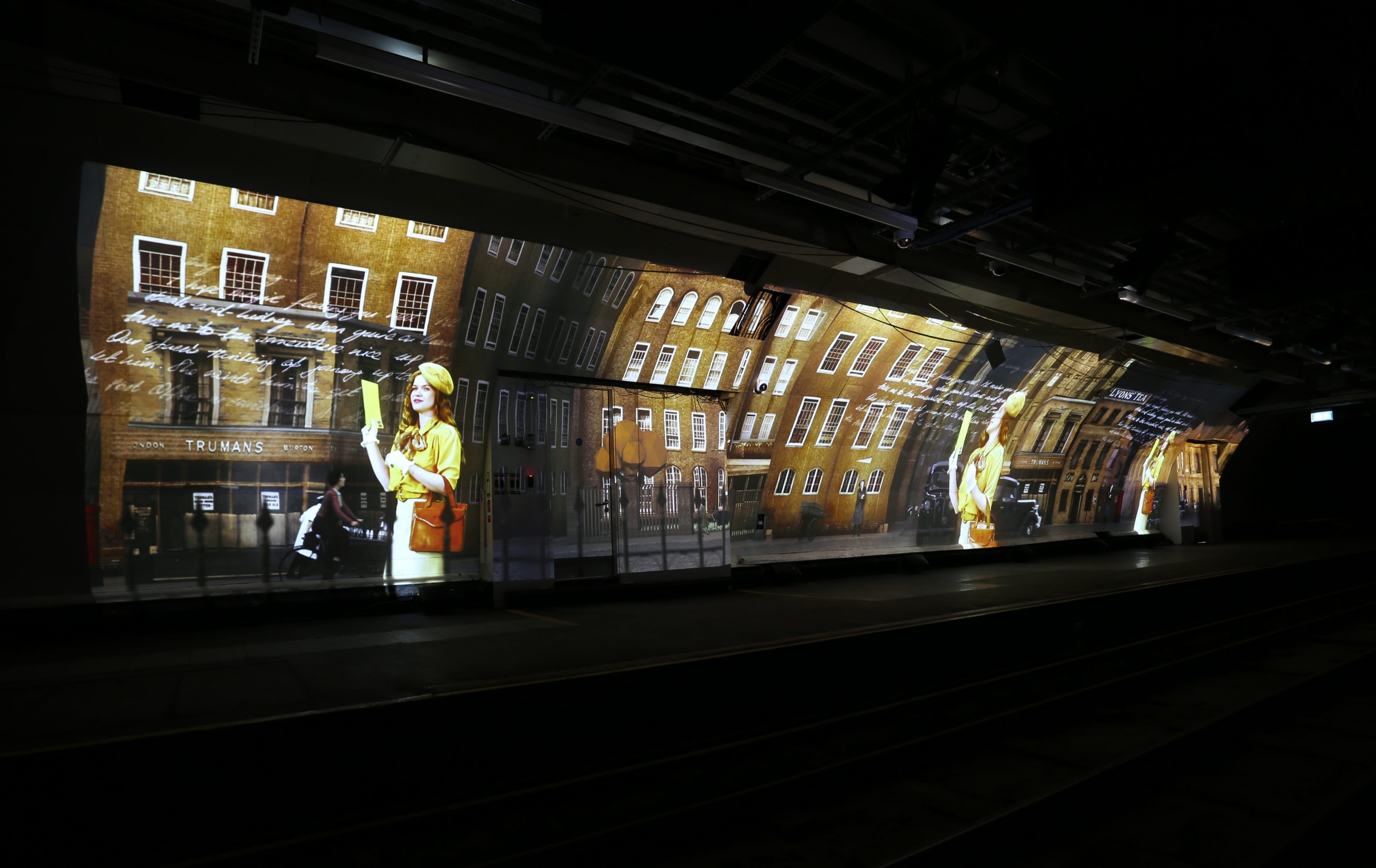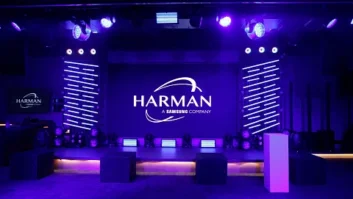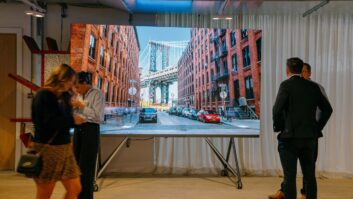
Immersive projection is playing an important role in a museum that tells the story of a little-known underground railway used by the Royal Mail.
London used to have its own underground railway track dedicated to postal deliveries. But when Mail Rail stopped operating in 2003, a handful of enthusiastic engineers kept it in good condition in case it was ever needed again. Fast forward to 2015, and the Postal Museum took over a section of the line with the idea of turning Mail Rail into a unique attraction, where visitors could take a journey through history.
The museum opened in September 2017, and welcomed 15,500 visitors in October 2017 alone. Descending into the former engineering depot of Mail Rail, visitors board a miniature train through the stalactite-filled tunnels to be transported back in time via a mesmerising 20-minute audiovisual experience.
Original station
Visitors descend deep below Royal Mail’s Mount Pleasant sorting office to discover the original and largely unchanged station platforms. Before boarding the train, they encounter a 4m-wide projection movie introducing the story of Mail Rail, courtesy of a Digital Projection E-Vision Laser 8500 projector. The 240sqm open space is also used as a venue for corporate events, with the projector capable of being linked to additional sources in such instances.
Visitors then board the train and are taken on a 15-minute ride through the tunnels, with an on-board commentary explaining the history of Mail Rail as they travel down to the first platform, where they are transported back to its 1930s heyday. Blending archive, motion graphics and character voice performance to create a truly immersive journey, this 18m projection captures Mail Rail’s unique sense of place and personality as well as its story. The projection features a 7,000 x 1,200 resolution, warped and blended image utilising a 7thSense Delta Infinity Server and powered by five Digital Projection E-Vision Laser 8500 projectors.
Visitors then continue their underground time travel on to a second platform, where they can follow the journey of three people’s letters in 1930s London. The 22m, life-size projection features an 8920 x 1200 resolution image displayed by seven Digital Projection E-Vision Laser 8500 projectors. Another Delta Infinity Server manages warping and blending.
Environmental challenges
The installation was not without its complexities and challenges, largely down to the underground environment – which meant systems needed to be particularly robust. With the equipment at risk of exposure to dust, humidity and temperature fluctuations, custom environmental housings from VizBox were developed to mitigate this risk, deploying Digital Projection’s previous experience with projector housings for London Underground during the design process.
Hardware specification was the task of AV integrator DJ Willrich (DJW). Josh Miller, project director at DJW, explains: “Due to the nature of the attraction, minimising maintenance was a key factor in the selection of laser projection. At an early stage we invited Digital Projection to demonstrate its range of laser projectors and following successful testing it was clear that the E-Vision Laser 8500 was the ideal projector for the project in terms of image quality, brightness levels, durability and value for money.”
Emma Harper, exhibitions officer at The Postal Museum, comments: “The AV hardware was critical to the success of this project, providing the backbone to the exhibition and ride experiences. Our key aspiration was to connect people through the evolving story of communications past and present, and show that postal heritage is of interest and relevance to everyone. Bringing the Mail Rail platforms to life played an important part in that, particularly as there are a limited number of artefacts available from what was very much a working depot, but 3D projection mapping really helped us to achieve this.”
www.7thsensedesign.com
www.digitalprojection.com
www.djwillrich.com
www.postalmuseum.org
www.projector-enclosures.com







